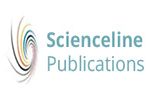(2024) Empirical Scrutiny of Geopolymer Concrete Containing Locally-produced Superplasticizer under Varied Temperatures. Journal of Civil Engineering and Urbanism. pp. 247-262. ISSN 2252-0430
|
Text
JCEU14(3s)247-262,2024.pdf Download (1MB) |
Abstract
Cement manufacturing companies contribute greatly to carbon-dioxide emission during production, hence there is need for novel eco-friendly or biodegradable cementitious material, which has the same strength and also durable. Geopolymers which are eco-friendly waste materials, which can also reduce construction cost are therefore considered for this purpose. The geopolymer stabilizing materials, fly ash (FA), kaolin clays powder (KCP), rice husk ash (RHA), and alkaline activator (procured sodium silicate, waste-created sodium silicate and sodium hydroxide) were added at 0, 2.5, 5, 7.5, and 10%, to the naturally created superplasticizer geopolymer concrete (GPC), so as to solve the problem of workability and efflorescence associated with fly ash based GPC. FTIR results shows major absorbance band at the region between 950 and 3250 cm−1. It means that addition of the naturally made superplasticizer to the geopolymer concrete lowered the viscosity and increased the flow behavior of concrete. The geopolymer concrete consists of super plasticizer (1.5%) and optimum of various binders i.e. 5% FA + 7.5% KC + 10% RHA + aggregate + water. At temperature above 70°C both compressive strength and weight decreases, for naturally made and purchased sodium silicate. The optimal geopolymer product showed substantial strength and durability enhancements at 70°C temperatures, with strength and durability values decline above 70°C, indicating material deterioration. A positive correlation between hot-state temperature, strength and durability properties was also established. The R2 of the Feret on the test set reaches 0.967, indicating its excellent predictive performance.
| Item Type: | Article |
|---|---|
| Keywords: | Rice Husk, Fourier Transform Infrared Spectroscopy, Waste-created sodium silicate, Superplasticizer; Eco-friendly |
| Subjects: | T Technology > TA Engineering (General). Civil engineering (General) |
| Divisions: | Journal of Civil Engineering and Urbanism (JCEU) |
| Page Range: | pp. 247-262 |
| Journal or Publication Title: | Journal of Civil Engineering and Urbanism |
| Journal Index: | Not Index |
| Volume: | 14 |
| Number: | 3s |
| Publisher: | Scienceline Publication |
| Identification Number: | https://doi.org/10.54203/jceu.2024.26 |
| ISSN: | 2252-0430 |
| Depositing User: | Dr. Heydar Dehghanpour |
| URI: | http://eprints.science-line.com/id/eprint/1326 |
Actions (login required)
 |
View Item |


 Dimensions
Dimensions Dimensions
Dimensions